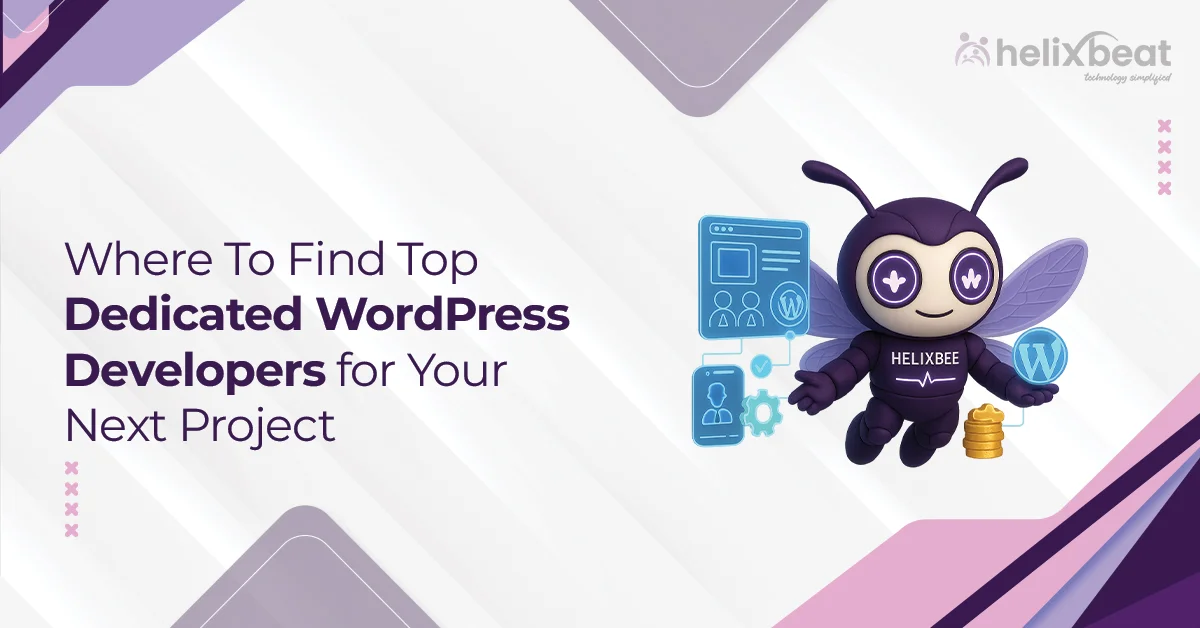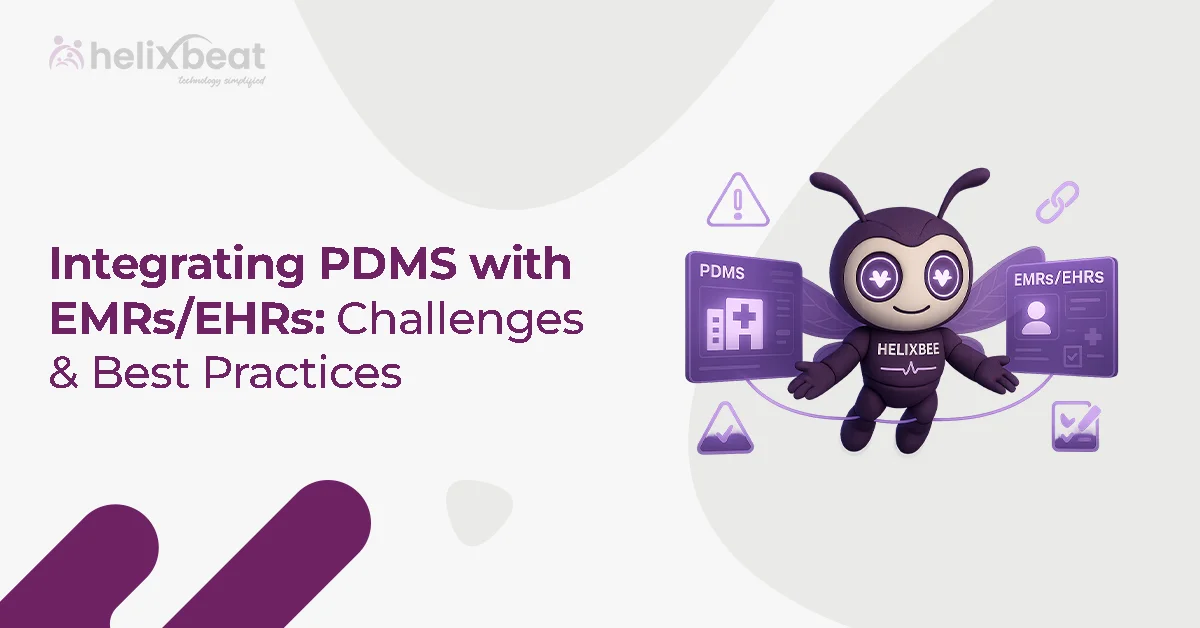If you’re a business owner, you probably know how tuff to build mobile apps that work on both iOS and Android. Developing separate apps for each platform results in high investment, takes more time, and make everything harder to manage.
That’s why cross-platform mobile application solutions have been introduced. With just one codebase, you can create an app that works smoothly on both platforms. It saves you time, minimises your costs, and high user experience no matter what device you use. It is not a new thing, where most of the businesses around worldwide are shifted to cross-platform solutions they help you stay competitive and make development much simpler.
In this blog, we’ll explain more about cross-platform mobile application solutions and why it is gaining popularity in global market.

Table of Contents
What is Cross-Platform Mobile Application?
A cross-platform mobile application is an app designed to work seamlessly on both iOS and Android devices using a single codebase. In simpler terms, instead of creating two separate apps for each platform, developers write one app that runs on both operating systems.
This approach saves businesses time, money, and effort, as they don’t have to develop, test, and maintain two different versions of the same app. Cross-platform application solutions use specialized frameworks like React Native, Flutter, and Xamarin to bridge the gap between the two platforms while meeting smooth user experience across all devices.
By choosing cross-platform mobile application solutions, businesses can launch their apps faster, reach a wider audience, and automate the maintenance process all while keeping costs under budget.
Whether it’s a startup or a well-established company, cross-platform mobile applications are quickly becoming the go-to solution for app development in today’s fast-paced digital world.
Why Businesses Need Cross-Platform Solutions
Businesses are increasingly choosing cross-platform mobile application solutions for several good reasons. First, it helps them launch apps faster, which is important in today’s competitive market. With the mobile app market growing worldwide, companies need to reach both iOS and Android users to take full advantage of this opportunity.
Cross-platform development also helps cut costs because businesses don’t need to create separate apps for each platform. This is especially helpful for startups and small businesses with limited budgets.
By using one codebase for both platforms, developers can easily update and fix bugs across both iOS and Android without doing the same work twice. This saves time and reduces the resources needed, making cross-platform mobile application solutions a cost-effective solution for businesses looking to grow quickly.
Key Advantages of Using Cross-Platform Mobile Application Solutions
High User Experience on All Devices
Cross-platform mobile application solutions ensure that users enjoy a consistent and seamless experience, no matter what device they are using. For example, Instagram provides a smooth, unified user experience on both iOS and Android. Whether you’re scrolling through your feed or posting pictures, the app’s interface, features, and performance remain the same across both platforms. This consistency helps build brand loyalty and makes users feel familiar and comfortable, regardless of the device.
Less Time to Develop and Launch
Developing separate apps for iOS and Android can be time-consuming. Cross-platform mobile application solutions significantly reduce development time, with organizations reporting a decrease of approximately 35% in time-to-market compared to traditional approaches.
Single Codebase
A single codebase is the backbone of cross-platform development, saving businesses time and resources. Facebook, one of the world’s largest social media platforms, uses React Native, a cross-platform framework, for its app. By maintaining a single codebase for both iOS and Android, Facebook can easily update features and resolve bugs without duplicating effort. This helps them maintain a high-quality user experience across millions of users on both platforms.
Easy to Implement
Cross-platform mobile application solutions are relatively easy to implement, especially with modern frameworks like Flutter and Xamarin. Google Ads is a great example. By using Flutter, Google was able to create a mobile app that works on both iOS and Android with minimal development effort. The framework allowed Google to quickly create a highly functional app, cutting down development time and offering new features faster to users.
Stress-free Maintenance
Maintaining one app for both platforms is much simpler than managing two separate apps. For example, Uber uses cross-platform mobile application solutions with a single codebase for both iOS and Android, allowing them to roll out updates, bug fixes, and new features simultaneously across platforms. This streamlined maintenance process reduces complexity and ensures consistent performance for millions of users.
Drawbacks of Cross-Platform Mobile App Development Solutions
1. Limited Performance in Complex Apps
Cross-platform mobile app development solutions may not deliver the same performance as native apps, especially for complex applications like games or apps that require heavy graphics processing. These apps might experience slower speeds or less responsiveness compared to their native counterparts.
2. Platform-Specific Customization Limitations
While cross-platform mobile application solutions are efficient, they may struggle with fully supporting platform-specific features or customizations. Certain iOS or Android-specific functionalities may not be seamlessly integrated, limiting the ability to take full advantage of unique platform features.
3. User Experience Differences
Even with cross-platform mobile app development solutions, slight differences in design and functionality may occur between iOS and Android. These discrepancies can create a less-than-ideal user experience, as the app might not feel as “native” on each platform.
4. Debugging and Testing Challenges
When it comes to debugging and testing, cross-platform apps can be more challenging. Issues that are platform-specific might require extra time and effort to identify and fix. Developers must test thoroughly on both platforms to ensure consistent functionality, which can lengthen the debugging process.
3 Main Cross-Platform Mobile Applications Gaining Popularity in Global Markets
When businesses need mobile app development solutions, cross-platform frameworks are becoming best choice to use. Where, these frameworks allow companies to create one app that works on both iOS and Android, saving time and money.
The most three popular frameworks are React Native, Flutter, and Xamarin. Let’s see why they’re so popular around worldwide.
1. React Native
React Native, created by Facebook, is one of the most well-known cross-platform frameworks. It allows developers to use JavaScript to build apps that perform well on both iOS and Android.
Most importantly, React Native offers near-native performance which means the app feels just like a native app on both platforms. Big companies like Instagram and Airbnb use React Native because it’s quick to develop, flexible, and easy to scale.
If you’re looking for a company for app development that offers speed and performance, React Native is right choice.
2. Flutter
Flutter, developed by Google, is another popular framework that is growing fast. It uses Dart, a programming language that allows developers to create beautiful, customizable apps that run smoothly on both iOS and Android.
Flutter is great framework because it allows developers to create apps with smooth animations and transitions in short period.
Mobile development startups love Flutter for its simplicity and speed. Companies like Google Ads and Alibaba use Flutter because it helps them build impressive, high-performing apps quickly.
3. Xamarin
Xamarin is developed by Microsoft, especially to build strong and powerful application. Where, the developers use C# and .NET to create apps that run on both iOS and Android.
On the other side, it provides a native-like experience, which means app that hold special feature like device-specific access and perform well. This makes other big companies (Slack and Microsoft) to use Xamarin for their apps because it’s reliable and more powerful.
In short, React Native, Flutter, and Xamarin are three of the best frameworks for cross-platform app development. Whether you’re a mobile development startup needing speed or a company for app development looking for reliable solutions, these frameworks are the best fit for all your needs.
Why Choose Helixbeat for Mobile App Development
In today’s digital world, most businesses face challenge to deliver high-quality mobile applications that work efficiently on both iOS and Android platforms.
Traditional development approaches can be time-consuming and costly, leading to delays and increased expenses.
That’s where Helixbeat comes in. We specialize in mobile app development solutions that let you create a seamless app with a single codebase, saving you time and money.
Whether you’re a startup or an established business, Helixbeat helps you launch faster, stay within budget, and deliver quality across both platforms. Ready to bring your app idea to life? Let’s get started with Helixbeat today.
FAQ:
1. What is a Cross-Platform Mobile Application?
A cross-platform mobile application is an app built using a single codebase that works on both iOS and Android platforms. Instead of developing two separate apps for each platform, cross-platform apps are designed to run seamlessly on both, saving time and reducing development costs.
2. Examples of Cross-Platform Apps
Some well-known cross-platform apps include:
- Instagram: Built using React Native, it works perfectly on both iOS and Android.
- Airbnb: Uses React Native for a smooth, cross-platform experience.
- Uber: Also relies on cross-platform development to serve millions of users on both iOS and Android.
3. How Does Cross-Platform Work?
Cross-platform development works by using a single codebase that can be deployed on multiple platforms (iOS, Android, etc.). Developers use frameworks like React Native, Flutter, or Xamarin to write the code. These frameworks handle the differences between platforms and allow the app to function similarly on both, which is more efficient than creating two separate apps for each system.
4. What is the Difference Between Native and Cross-Platform Mobile Apps?
- Native Apps: These are apps developed separately for each platform (iOS or Android) using platform-specific programming languages like Swift for iOS or Java/Kotlin for Android. Native apps generally offer better performance and more access to device features.
- Cross-Platform Apps: These apps use a single codebase to work on both iOS and Android. They are faster and cheaper to develop but may not perform as well as native apps in complex or resource-heavy scenarios.
5. What is the Best Cross-Platform Mobile Development?
The “best” cross-platform mobile development framework depends on your business needs. Popular options include:
- React Native: Known for its flexibility and strong community support, used by apps like Instagram and Facebook.
- Flutter: Developed by Google, known for its fast development and beautiful UI, popular for creating highly customized apps.
- Xamarin: A Microsoft-backed framework ideal for enterprise-level apps that require near-native performance.
6. How Does Cross-Platform Work?
Cross-platform development uses a single codebase to create apps that work on both iOS and Android. Frameworks like React Native, Flutter, and Xamarin handle platform-specific details, allowing the same code to run on both platforms. The framework translates shared code into native code for each platform, ensuring the app functions seamlessly across devices. This approach saves time, reduces costs, and ensures a consistent user experience.














